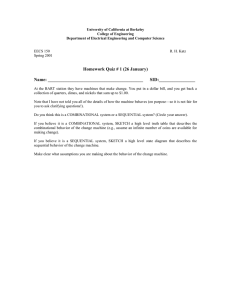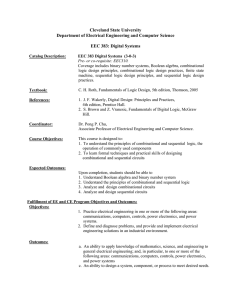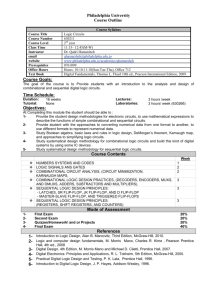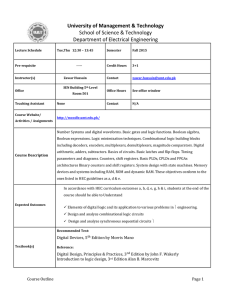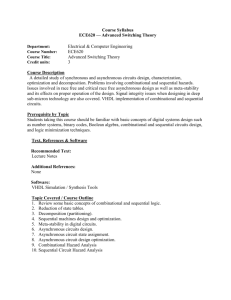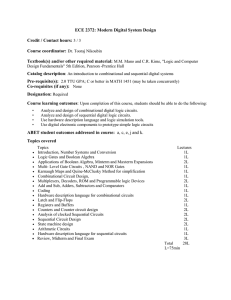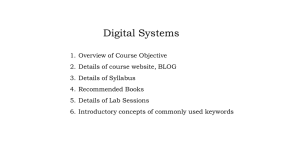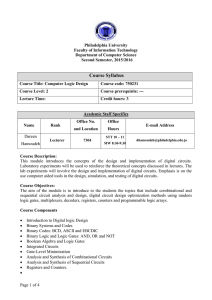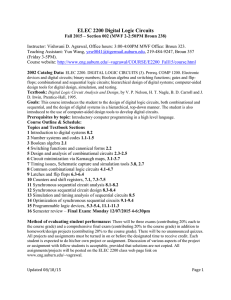ECE 320 (.doc)
advertisement
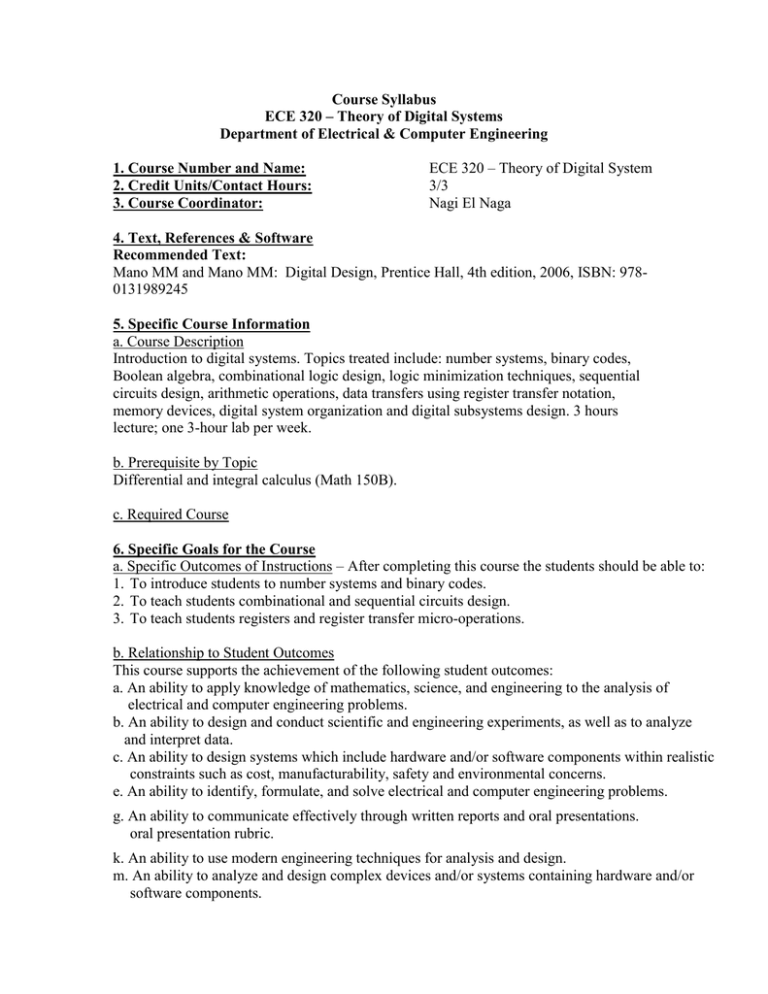
Course Syllabus ECE 320 – Theory of Digital Systems Department of Electrical & Computer Engineering 1. Course Number and Name: 2. Credit Units/Contact Hours: 3. Course Coordinator: ECE 320 – Theory of Digital System 3/3 Nagi El Naga 4. Text, References & Software Recommended Text: Mano MM and Mano MM: Digital Design, Prentice Hall, 4th edition, 2006, ISBN: 9780131989245 5. Specific Course Information a. Course Description Introduction to digital systems. Topics treated include: number systems, binary codes, Boolean algebra, combinational logic design, logic minimization techniques, sequential circuits design, arithmetic operations, data transfers using register transfer notation, memory devices, digital system organization and digital subsystems design. 3 hours lecture; one 3-hour lab per week. b. Prerequisite by Topic Differential and integral calculus (Math 150B). c. Required Course 6. Specific Goals for the Course a. Specific Outcomes of Instructions – After completing this course the students should be able to: 1. To introduce students to number systems and binary codes. 2. To teach students combinational and sequential circuits design. 3. To teach students registers and register transfer micro-operations. b. Relationship to Student Outcomes This course supports the achievement of the following student outcomes: a. An ability to apply knowledge of mathematics, science, and engineering to the analysis of electrical and computer engineering problems. b. An ability to design and conduct scientific and engineering experiments, as well as to analyze and interpret data. c. An ability to design systems which include hardware and/or software components within realistic constraints such as cost, manufacturability, safety and environmental concerns. e. An ability to identify, formulate, and solve electrical and computer engineering problems. g. An ability to communicate effectively through written reports and oral presentations. oral presentation rubric. k. An ability to use modern engineering techniques for analysis and design. m. An ability to analyze and design complex devices and/or systems containing hardware and/or software components. n. Knowledge of mathematics including differential equations, linear algebra, complex variables and discrete math. 7. Topics Covered/Course Outline The following are detailed contents of the course: 1. Preliminary Concepts Number systems, conversions of numbers between different bases, Binary Codes 2. Combinational Logic The basic properties of switching of Boolean Algebra, simplification of switching expressions using basic properties, K-map, and Tabulation method. Representation of logical function by: logical expression, truth table, Canonical sum of products (Minterms)Canonical product of sums (Maxterm) Knowing how to convert one form of representation to another. The implementation of any logical function using: (1) AND, OR and NOT gates (2) NAND gates only (3) NOR gates only Design of a combinational logic circuit to do a specific function The design of different types of arrays (encoders, decoders, selector logics, multiplexer) with some applications (e.g., seven segment display). 3. Sequential Circuits The input-output behavior of the various types of binary memory devices, D, RS, JK and Toggle flip-flops. Sequential circuit general definition, and the difference between synchronous and asynchronous types. The state table and state diagram representations of sequential circuits. The design of minimal state completely specified synchronous sequential circuit. All types of counters (up, down, ring counters). 4. Registers and Basic Transfer of Information Shift registers (right, left) using all types of flip-flops. Parallel transfer from one register to another. Tri-state logic and bus concept. 5. Computer Organization The basic units of Digital Computer (Input/Output, Memory, Control, ALU), the function of each unit and their interaction during the fetch and execute phases. Prepared by: Nagi El Naga, Professor of Electrical and Computer Engineering, October 2011 Ali Amini, Professor of Electrical and Computer Engineering, March 2013
